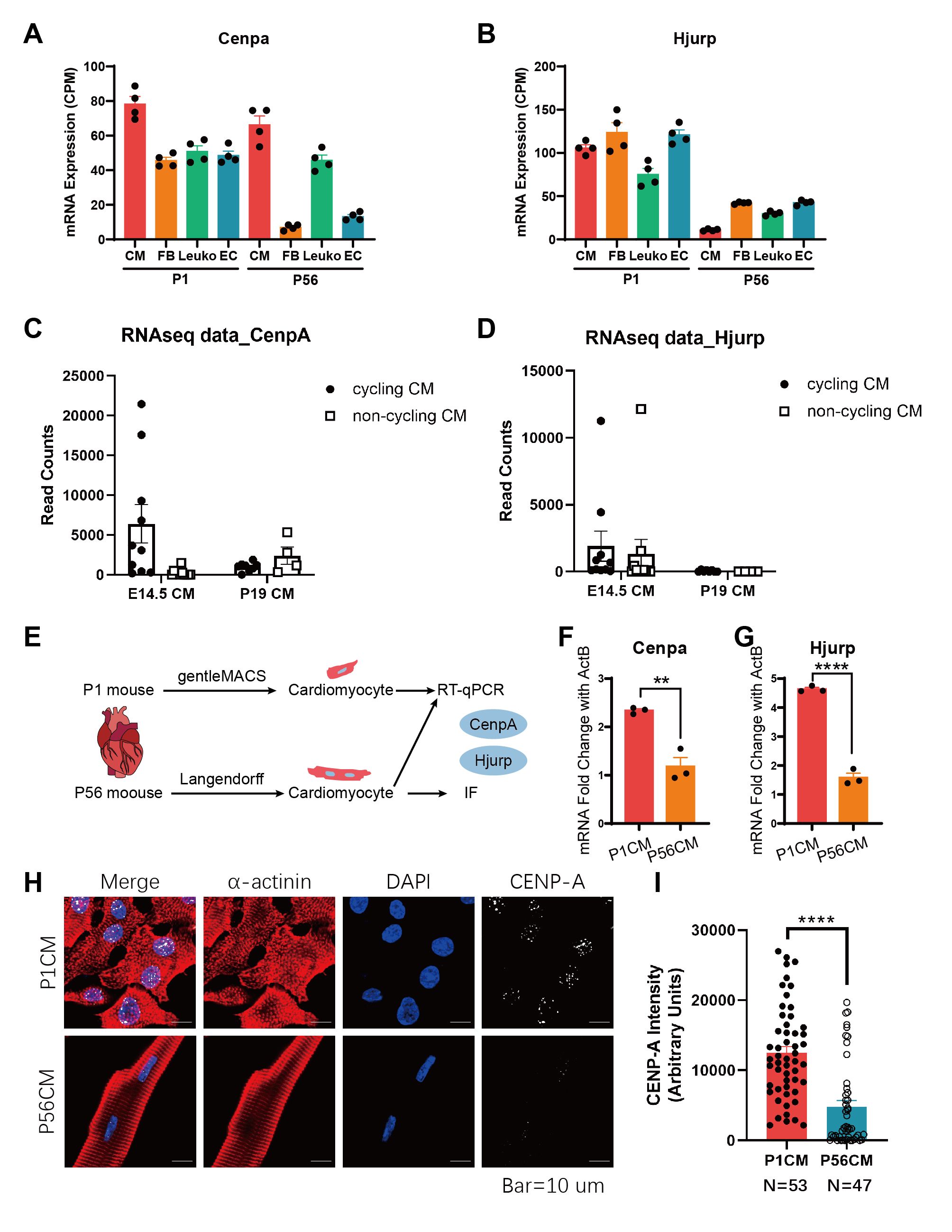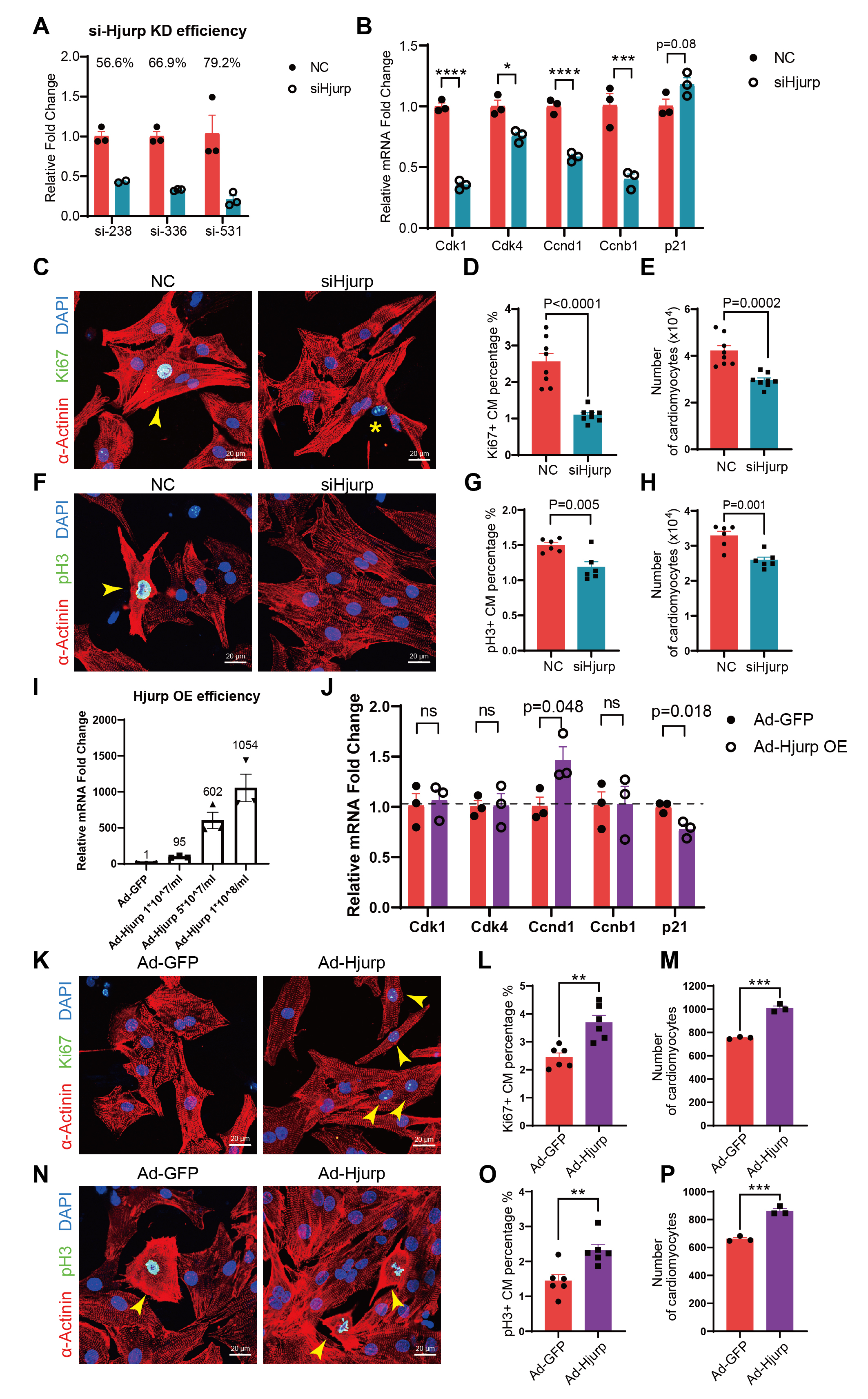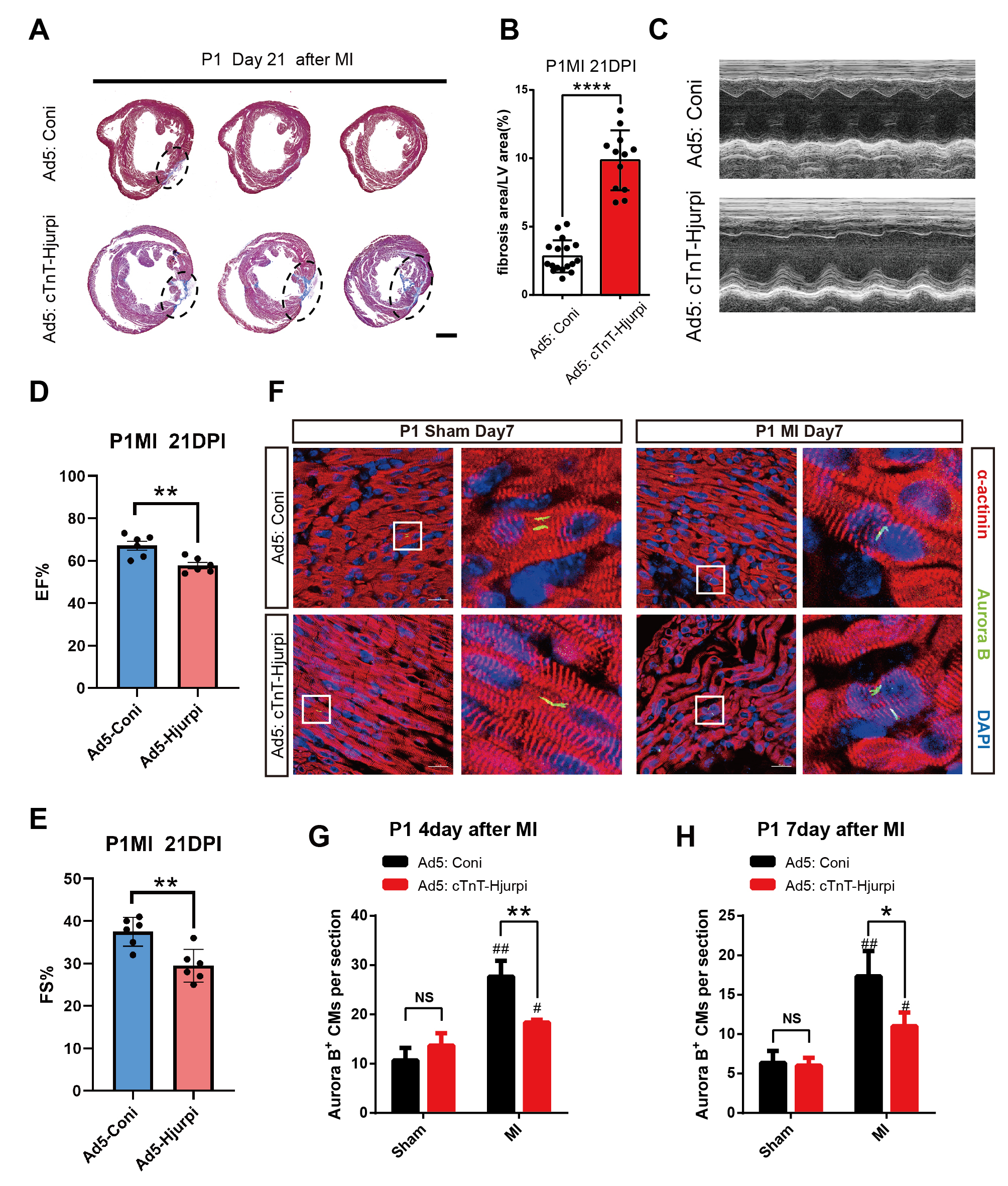Final ID: We034
Hjurp Promotes Cardiomyocyte Proliferation and Heart Regeneration by Mediating CenpA Assembly
Abstract Body: Background: Loss of cardiomyocytes without replenishment is one of the main cellular mechanisms leading to heart failure. Promoting cardiomyocyte proliferation and heart regeneration has become a therapeutic strategy to rescue heart failure. Therefore, we need to understand the differences between neonatal cardiomyocytes and adult cardiomyocytes, summarize the mechanism of cardiomyocyte exit from the cell cycle, and find potential intervention targets.
Method: Combined analysis of bulk RNA-seq, ATAC-seq, and histone CUT&Tag of 1-day-old mouse and 7-day-old mouse cardiomyocytes to screen for Hjurp. In vitro, siRNA was used to knock down Hjurp in neonatal rat cardiomyocytes, and adenovirus was used to overexpress Hjurp. RT-qPCR and immunofluorescence were used to detect cardiomyocyte proliferation and cardiomyocyte number. In vivo, adenovirus was injected into the mouse heart in situ to knock down Hjurp. Immunofluorescence was used to detect cardiomyocyte proliferation. Masson staining was used to detect the proportion of myocardial fibrosis and echocardiography was used to detect cardiac function to reflect cardiac regeneration and repair.
Results: HJURP was identified by RNA-seq, ATAC-seq, and histone CUT&Tag as a key regulator of cardiomyocyte proliferation during neonatal heart regeneration in mice. The expression levels of Hjurp and Cenp-A decrease with the weakening of cardiomyocyte proliferation ability. In vitro, Hjurp overexpression promoted whereas Hjurp knockdown attenuated cardiomyocyte proliferation. In vivo, cardiomyocyte proliferation and heart regeneration were suspended in neonatal mice after cardiac injury when Hjurp was knockdown in cardiomyocytes.
Conclusion: Our study confirms that HJURP is necessary for cardiomyocyte proliferation and cardiac regeneration after cardiac injury. As an assembly element of centromeres during the cell cycle, overexpression of HJURP is sufficient to promote cardiomyocyte proliferation, which may be accomplished by promoting CENP-A assembly. Thus, HJURP might serve as a potential novel target in heart regeneration after myocardial infarction.
Method: Combined analysis of bulk RNA-seq, ATAC-seq, and histone CUT&Tag of 1-day-old mouse and 7-day-old mouse cardiomyocytes to screen for Hjurp. In vitro, siRNA was used to knock down Hjurp in neonatal rat cardiomyocytes, and adenovirus was used to overexpress Hjurp. RT-qPCR and immunofluorescence were used to detect cardiomyocyte proliferation and cardiomyocyte number. In vivo, adenovirus was injected into the mouse heart in situ to knock down Hjurp. Immunofluorescence was used to detect cardiomyocyte proliferation. Masson staining was used to detect the proportion of myocardial fibrosis and echocardiography was used to detect cardiac function to reflect cardiac regeneration and repair.
Results: HJURP was identified by RNA-seq, ATAC-seq, and histone CUT&Tag as a key regulator of cardiomyocyte proliferation during neonatal heart regeneration in mice. The expression levels of Hjurp and Cenp-A decrease with the weakening of cardiomyocyte proliferation ability. In vitro, Hjurp overexpression promoted whereas Hjurp knockdown attenuated cardiomyocyte proliferation. In vivo, cardiomyocyte proliferation and heart regeneration were suspended in neonatal mice after cardiac injury when Hjurp was knockdown in cardiomyocytes.
Conclusion: Our study confirms that HJURP is necessary for cardiomyocyte proliferation and cardiac regeneration after cardiac injury. As an assembly element of centromeres during the cell cycle, overexpression of HJURP is sufficient to promote cardiomyocyte proliferation, which may be accomplished by promoting CENP-A assembly. Thus, HJURP might serve as a potential novel target in heart regeneration after myocardial infarction.
More abstracts on this topic:
Absence of standard modifiable risk factors (SMuRF-less) among 5002 Middle Eastern patients with atherosclerotic cardiovascular disease: (Interim analysis from the Jo-SMuRF Study)
Aldalal'ah Mo'men, Hammoudeh Ayman, Hamza Ibrahem, Alqudah Mohammad, Khasawneh Hasan, Alomari Sawsan, Alomari Ahmad, H. Assaf Sarah, Zaqqa Ayah, Khatatbeh Moawiah
Advancing Personalized Medicine through Enhanced Heart-on-Chip Models Incorporating iPSC-Derived Immune CellsMozneb Maedeh, Arzt Madelyn, Moses Jemima, Escopete Sean, Sharma Arun



